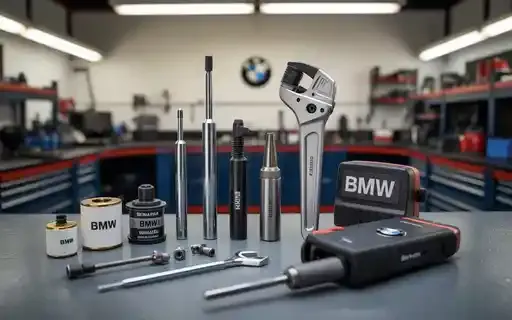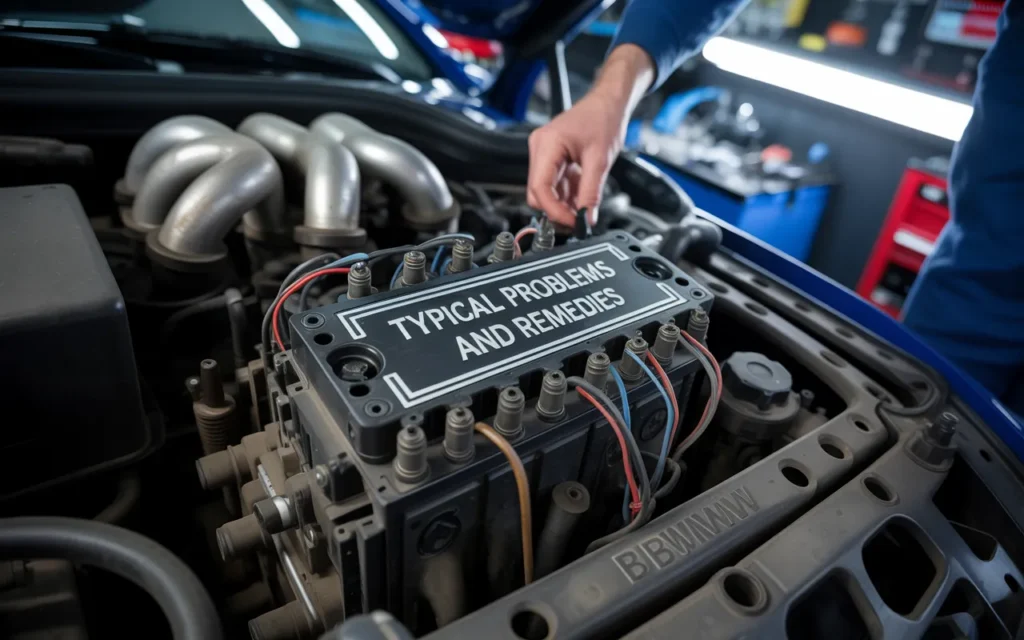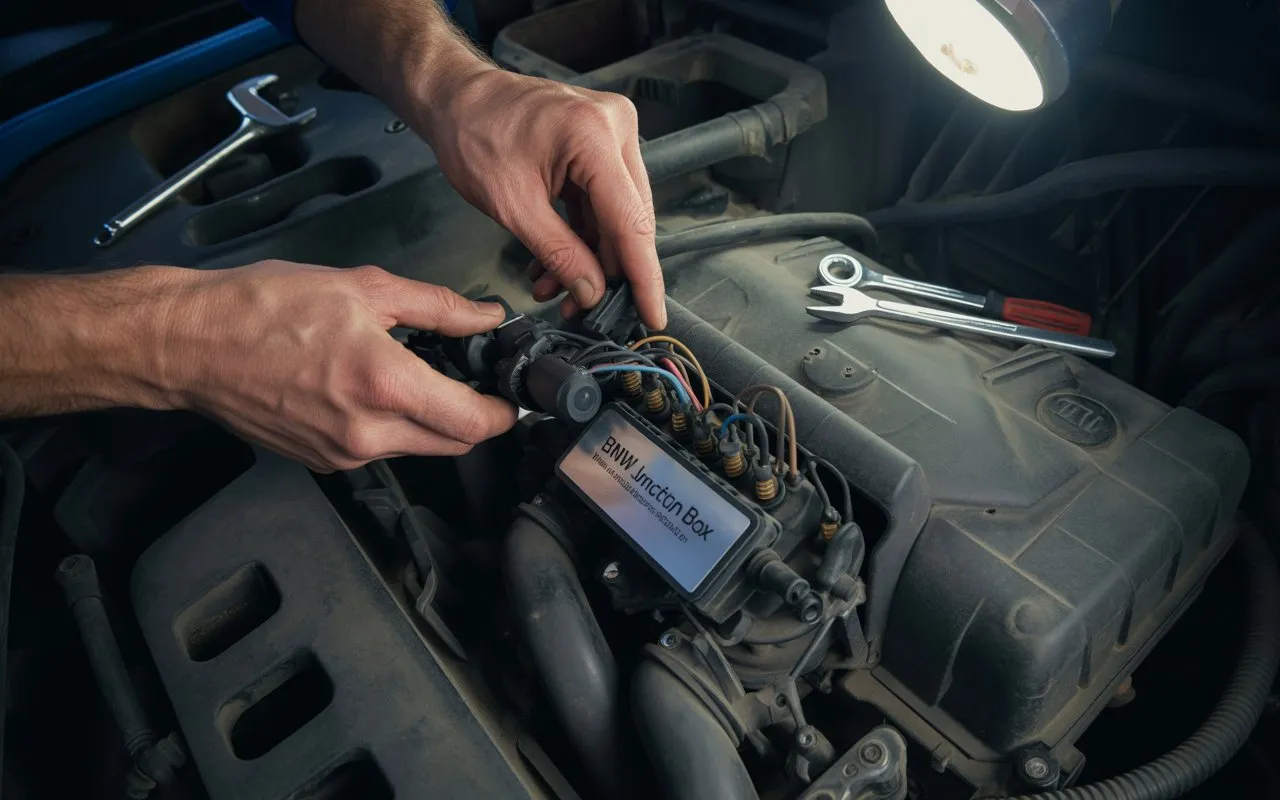The BMW junction box is an important part of the entire functioning of the vehicle and is located in the intake manifold. Knowing the proper way to remove the junction box is a must to all BMW owners and enthusiasts, particularly those who perform regular maintenance or repair. The process does not only guarantee the best performance of the engine, but also enables more thorough checks of possible underlying problems that may influence the durability of the vehicle.
In all my experiences with different BMW models, I have realized that most owners do not take the time to learn how to remove the junction box. A properly maintained junction box can avoid the most frequent problems such as electrical failures and component malfunctions, which may occur when the box is not accessible to perform the required maintenance. Professional mechanics tend to point out that adequate knowledge of this process can result in effective troubleshooting and repairs, thereby improving driving experiences.
In addition, the process of taking out the BMW junction box intake manifold is not as challenging as it might seem. It can be done effectively with the right tools and a clear picture of the steps to be taken. A feeling of achievement accompanies the understanding of these valuable skills, and owners can now be in control of their vehicle maintenance and repair requirements. This empowerment creates a higher value on the engineering of BMWs and changes the relationship between passive ownership to active stewardship.
This guide will walk the readers through a step by step procedure of safely removing the junction box off the intake manifold. The goal is to de-mystify the process and get people to interact with their vehicles in a more personal way. With the knowledge of this vital process, owners will be able to make sure that their BMWs are not only operating at optimal efficiency but also have a greater resale value in the long run.
The Role of the Junction Box
The junction box plays a vital role in the BMW engine system, as it is a central point of electrical connections and communication between different parts of the system. It is usually found on or close to the intake manifold and it arranges and contains wiring connections that combine sensors, actuators and other electronic devices required to achieve the best engine performance. This is a well-designed part that makes all these systems work in unison so that the engine can work in a smooth and efficient manner.
The junction box has one of its main functions to distribute power and signal paths to the engine management system that coordinates numerous functions, such as fuel injection and ignition timing. The correct operation of the junction box is of primary importance; any break in connections or malfunctions may cause problems with the work of the engine, including rough idling, loss of power, or fuel consumption. In other instances, there can be a bad wiring or a faulty junction box that can display error codes on the dashboard and require a professional technician to diagnose.
There are a number of reasons why the junction box might need to be removed. As an example, when there is a suspicion of an electrical fault or when there is visible damage to the wiring harness inside, it is necessary to extract the junction box so that it can be thoroughly inspected. Its removal may also be necessary to clear the intake manifold in order to maintain or upgrade it. Historically, the process may appear to be straight forward but care should be taken to prevent further complications, including dislodging of connectors or contaminating the engine. The right procedures must be observed to make sure that the vehicle is in the best operating condition during and after the process.

Equipment and Supplies
In order to successfully and safely remove the junction box on the intake manifold of your BMW, it is important to have the right tools and materials at hand. The proper equipment can make the process much easier and less likely to cause damage to the parts or harm to a person. The following is a list of all the tools and materials required to do this.
To start with, you will need simple hand tools that are available in most garages. These are a combination of wrenches or socket sets both standard and metric since the fasteners on BMW cars may be different. There will also be the need of a flathead and a Phillips screwdriver to remove different screws and clips. Moreover, a pair of pliers will help to hold and manipulate smaller parts, and a torque wrench might be required to reassemble parts to the specifications of the manufacturer.
Besides the basic tools, there are certain special tools that are useful in this work. A car diagnostic tool or OBD II scanner can be useful in resetting any error codes that occur after disassembly or testing after reinstallation, depending on the model. A trim removal tool kit will help keep your car surfaces scratch and damage free when removing trim parts. Also, a magnetic pick-up tool can be used to retrieve fasteners that can fall in difficult to reach places during the disassembly process.
Finally, make sure you have a few cleaning supplies, like rags or shop towels, and any suitable lubricants or sealants you might need when you reinstall it. This list of tools and materials will help you to remove the junction box off the intake manifold easily and efficiently by preparing them in advance.
Safety Precautions
It is important to note that before you set out to undertake the task of removing the BMW junction box on the intake manifold, you must take key safety measures to ensure you and the car are safe. The removal procedure entails going through electrical parts and operating near the engine, and it is important to be careful.
The first and the most important thing is to disconnect the battery. This is an important step because it will avoid any accidental short-circuits or electric shocks when you are working on the vehicle. To remove the battery, find the battery terminals, which are usually in the trunk or under the hood, and loosen the terminal clamps with a suitable wrench. It is always best to take off the negative terminal first.
Besides disconnecting the battery, proper safety equipment must not be ignored. It is necessary to wear safety goggles to prevent your eyes being exposed to debris or fluids that might leak out during the removal process. Gloves are also strongly advised to protect your hands against sharp edges and possible chemical exposure, in case of coolant or oil spills. Knee pads may help you feel more comfortable and safe in case you will be working under the vehicle.
Moreover, it is impossible to overstate the importance of making sure that the engine is cooled down prior to the removal process. There are dangers of burns or other injuries when working on a hot engine. After use, allow the engine to cool down at least 30 minutes. It is important to remember that any maintenance work when the engine is hot may cause unexpected accidents. These precautions will create a safe working environment and reduce the risks that may occur, and the junction box can be removed more efficiently out of the intake manifold.
The Step-by-Step Removal Process
The process of removing the junction box of the intake manifold of a BMW needs accuracy and care. These are the steps to follow to make the removal process successful with no complications.
The first is to make sure that the engine is cool so that you do not get burns or other injuries in the process. First, disconnect the battery; this is important because it will avoid any electrical shorts when you are working. After this, find the intake manifold. You may have to take off certain engine covers and parts, depending on the particular BMW model, to get a better view, including the air intake duct. Note the way these parts fit together, because you will have to put them back together again.
Then find the junction box on the intake manifold. There are a few connectors and wiring that you will observe and might have to be carefully disconnected. Make sure that you mark these connectors so that they can be easily reinstalled. With a flat-head screwdriver, loosen any locking tabs that keep the connectors firmly in place. One should be careful at this step because forceful removal of connectors may cause damage.
Continue by removing any screws or bolts that secure the junction box to the manifold. Such fasteners can be found at the bottom of the junction box and there can be concealed screws which you have to find by feel. These fasteners can be removed using a socket wrench or an appropriate screwdriver. After they are removed, shake the junction box to loosen it, but do not pull on the wiring that is attached to it too hard.
Once the junction box is clear of the intake manifold, check the area to see any debris or residues that may require cleaning up prior to reassembly. Being extra careful during this step can help avoid future operational problems. With these specific steps, you ought to be able to remove the BMW junction box out of the intake manifold with relative ease.

Typical Problems and Remedies
The process of removing the BMW junction box out of the intake manifold can be quite challenging and can pose a number of obstacles in the way of your work. Among the most common problems, there is the need to deal with stubborn bolts that are either rusted or over-torqued. This can be very frustrating, particularly to those who are not experienced in car repairs. To overcome this difficulty, it can be especially useful to loosen the bolts with a penetrating oil. Use a lot of oil and leave it to soak a few minutes; this may make it easier to remove without stripping the bolt heads.
The other possible barrier is the misalignment of parts in the process of disassembly. The junction box is also very closely linked to other components of the intake manifold and removing it without proper instructions can be confusing. The original positions of all parts are recommended to be noted before removal. It can be useful to take photos so that you can put parts back in their proper locations without any difficulties. Also, consulting the BMW service manual may yield diagrams that can give an idea of how parts are supposed to fit.
Also, electric connectors or hoses can be tightly mounted, making the disassembly difficult. When you are not sure how hard to press, a light rocking movement will often loosen a stubborn connection without breaking it. In case of resistance, make sure to check again to see whether there are any clips or retaining mechanisms that could be holding them.
Knowing about these typical difficulties in the process of removing the junction box can make your work much easier. Using these practical solutions recommended by professionals in automotive maintenance, you will be able to increase your ability to overcome possible challenges effectively, and in the end, you will have an easier time removing the vehicle.
Reinstallation and Testing
After the BMW junction box is successfully removed off the intake manifold, it is important to be cautious when reinstalling it back in order to achieve optimum performance. Start by assembling the tools needed such as a socket set and a torque wrench. Prior to reinstallation, check the junction box and other components around it to see any visible damage or wear that might have been caused during removal. In case of any problem, it should be corrected and then reassembled to ensure system integrity.
Begin the reinstallation by centering the junction box with the opening on the intake manifold. Make sure that gaskets or seals are in the right place because they are important in avoiding air leaks, which may affect the performance of the vehicle. Gently yet firmly push the junction box into position and make sure that it fits snugly without any extra effort. When in place, fasten the junction box with the correct bolts, and tighten them to the correct torque settings of the manufacturer using a torque wrench. This is a critical step, because over tightening may cause unwanted air leaks or component breakage.
Once the junction box is firmly attached, it is time to do a comprehensive test of the system to ensure that everything is working properly. Start by reconnecting any electrical connectors and vacuum hoses that you removed in the disassembly process. After all the connections are restored, turn on the engine and allow it to idle a few minutes. Look out to detect any anomalies like unusual noises or dashboard warning lights. It is also recommendable to inspect possible air leaks with the help of a smoke tester or any other diagnostic device. A properly sealed and operating junction box is essential to the best performance of the engine, so take the time to make sure everything is working properly once it is reinstalled.
FAQs
What equipment is required to take out the junction box?
The BMW junction box can be removed with simple tools, including a socket set, screwdriver, and a torque wrench. You need to make sure that you have the right size and kind of tools to avoid damaging anything in the process of removal.
Can the junction box be removed without the help of a professional?
Although most BMW owners are able to remove the junction box on their own, it is advisable to get professional help in case you are not experienced in vehicle maintenance. This does not only guarantee safety but also prevents possible damage of the critical parts.
What can I do to keep the junction box after removal?
It is recommended that the BMW junction box should be checked and serviced regularly. This involves cleaning it to avoid accumulation of dust and inspecting it to see whether it is damaged. In case the junction box has been taken out over long durations, make sure that all the seals and connections are in place before reinstalling.
What can I do in case I have problems after reinstallation?
In case of the persistence of problems after the reinstallation of the junction box, it is essential to recheck all connections and fittings. Check the loose wires or parts that could be causing performance issues. In other instances, the service manual of the vehicle or a professional mechanic can give specific advice on how to solve a particular problem.
Conclusion
The process of removing the BMW junction box out of the intake manifold is one of the most important processes to keep the engine in good working condition and to make your car last long. As described in this guide, knowing how this process works can result in great enhancements to the functionality of your vehicle. We have talked about the tools we need, the safety precautions we need to take and the step-by-step procedure to do the task well. This is a task that should be done with caution because when done wrongly, it can cause complications that can interfere with the performance of the engine.
Learning how to remove the BMW junction box will help you to perform minor maintenance work, which will save you time and money in the long-term perspective. It gives you the ability to be in control of the maintenance of your vehicle, not only improving the performance of your car but also your capabilities as a car owner. Although it might appear to be a challenging task at the beginning, the step-by-step instructions can make you feel confident about your chances to perform this task successfully.
But it is also important to know your boundaries. In case you are not comfortable at any stage of the removal process or you face some unforeseen difficulties, do not be afraid to ask a professional mechanic to assist you. Their experience can be used to give confidence and make sure that the job is done without compromising the integrity of the vehicle. In the end, knowledge, confidence, and professional support will result in improved vehicle maintenance and a pleasant driving experience.

